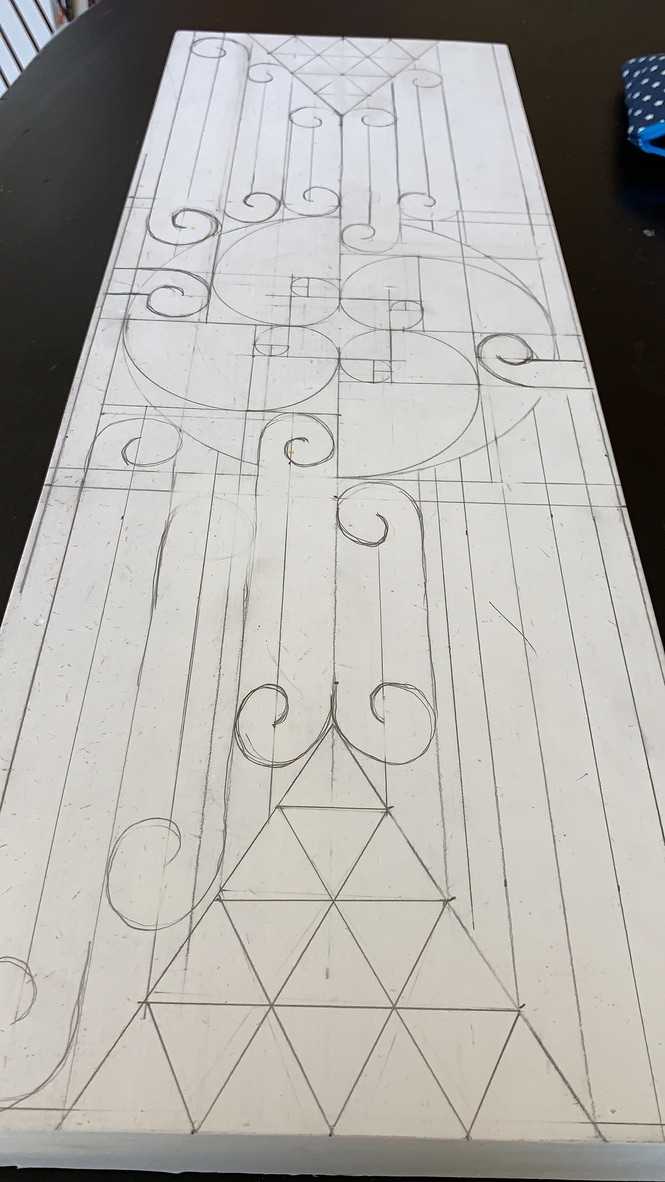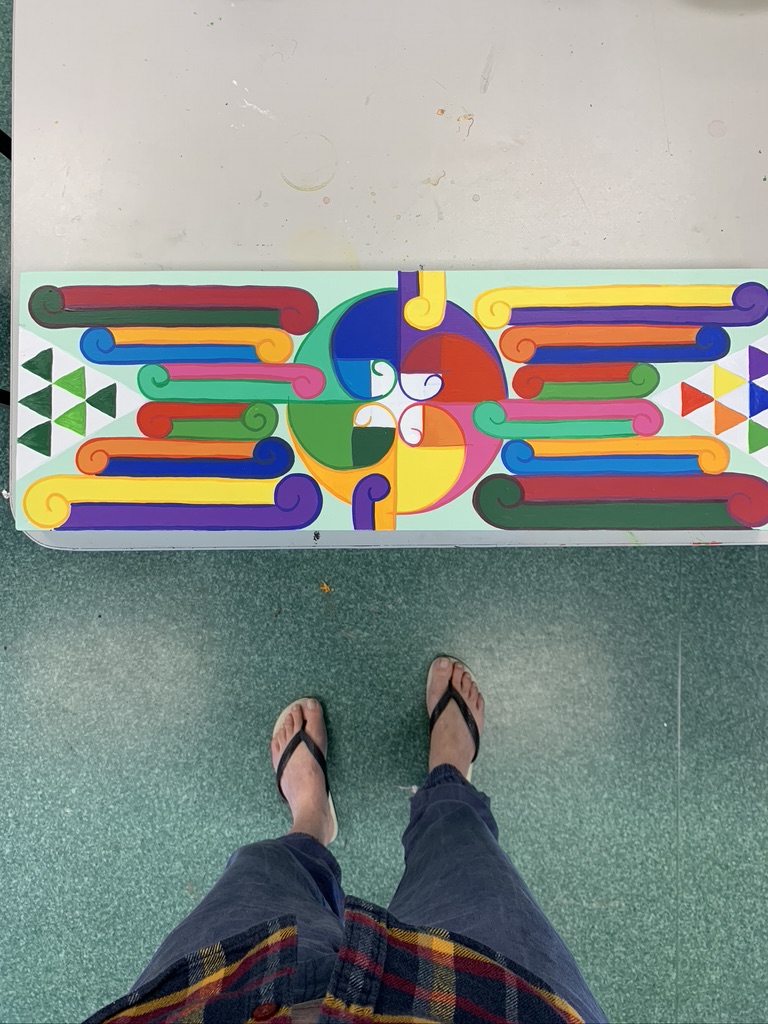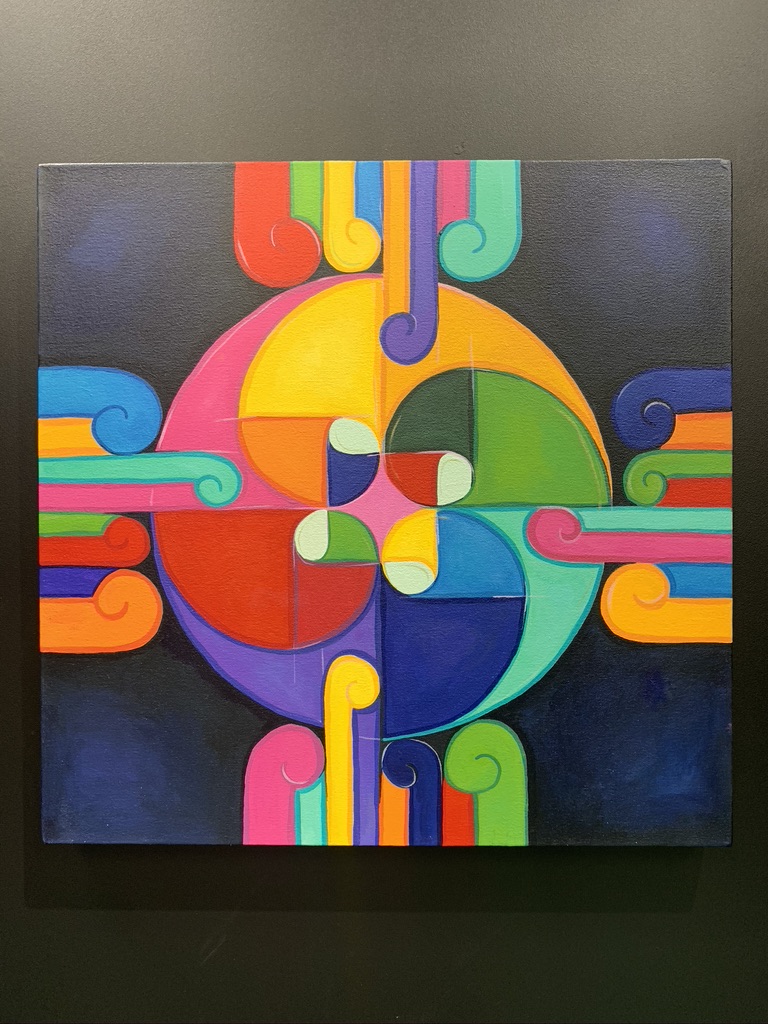Reflections of Creative Process in Visual Pepeha.
Toi Maruata | Certificate in Maori and Indigenous Art,
Te Wānanga o Aotearoa | Whirikoka | Tairawhiti September 2019
Pepeha - A way of introduction to tell your personal story used in the Māori culture to express where we come from and the journey taken to get here.
Through this reflection I want to document the internal and external process of arriving at my final I’ll piece. What has resulted from this investigation I see as a starting point of personal and practical research.
In my research surrounding my Pepeha I looked into how my ancestors arrived in Aotearoa and their connection to this land. As early colonials and landowners the internal conflicts that arose made me question the position of my generation and our responsibilities as New Zealanders. A reflection of many kiwis at this point in time and something that I will continue to investigate. I don't believe however that these thoughts and responsibilities are unique of Aotearoa as has been reflected in this quote regarding western culture arriving in the east.
"The European invasion of the East was an act of violence on a grand scale. It has left us with the duty—noblesse oblige—of understanding the spirit of the East."1
I have always felt tied to Aotearoa and having recently returned to New Zealand after close to 2 decades away, the reasons for returning to the East Coast have greatly influenced the visual representation of my pepeha. My sense of identity is scattered, I have time in distinct places, I have stories and connections which are uniquely mine and not related to here, I do however relish in the ongoing connections and reconnections which continuously arise and create a rich tapestry.
Letting my story unfold through process of investigation rather than controlling it through specific limitations was essential in allowing time for my story to evolve.
“The crucial concept here is to come to know what is right for you, at this moment in your process. Honor any resistance, do not push through it heroically. There is no rush. Trust soul, trust image, and trust your own gut.”2
Through this reflection I want to document the internal and external process of arriving at my final I’ll piece. What has resulted from this investigation I see as a starting point of personal and practical research.
In my research surrounding my Pepeha I looked into how my ancestors arrived in Aotearoa and their connection to this land. As early colonials and landowners the internal conflicts that arose made me question the position of my generation and our responsibilities as New Zealanders. A reflection of many kiwis at this point in time and something that I will continue to investigate. I don't believe however that these thoughts and responsibilities are unique of Aotearoa as has been reflected in this quote regarding western culture arriving in the east.
"The European invasion of the East was an act of violence on a grand scale. It has left us with the duty—noblesse oblige—of understanding the spirit of the East."1
I have always felt tied to Aotearoa and having recently returned to New Zealand after close to 2 decades away, the reasons for returning to the East Coast have greatly influenced the visual representation of my pepeha. My sense of identity is scattered, I have time in distinct places, I have stories and connections which are uniquely mine and not related to here, I do however relish in the ongoing connections and reconnections which continuously arise and create a rich tapestry.
Letting my story unfold through process of investigation rather than controlling it through specific limitations was essential in allowing time for my story to evolve.
“The crucial concept here is to come to know what is right for you, at this moment in your process. Honor any resistance, do not push through it heroically. There is no rush. Trust soul, trust image, and trust your own gut.”2
3
Throughout the process,
I was conscious of the creative barriers that were arising.
I started sketching relative symbols. In representation of my Scotish and Irish ancestry I chose the Triskele spiral3 as a symbol that we are all connected. Used in celtic symbolism amongst others as well having a similar structure to the raperape design in kowhaiwhai patterns.
Connecting the Triskele to a Kowhai Ngutu Kaka design representing myself. The three Kape as a representation of my children, which in turn interlinks with another koru in the upper/northern part of the design, my Chilean partner and our connection in the northern hemisphere. This Koru links to the south and hooks to the Chakana (Incan Cross) as our journey to South America where we reside under a mountain that was an Incan fortress. The to and fro koru patterns translate to the coming and going as well as the connection across the pacific.
The southern cross also features as this was a celestial link that was used on both sides of the pacific.
The southern cross also features as this was a celestial link that was used on both sides of the pacific.
This design could have been pushed further and had the basis of the pepeha wanting to be told however I was not content with how I felt about it or its balance. After a korero (discussion) with my tutor Johnny Moetara who asked the question, ¨So how do you normally work?¨ I explained that I have been working in a more geometric, circular, mandala like style, with a strong use of colour and he encouraged me to incorporate that into my design. To add to the seeds given to me by my tutor was the work of Sandy Adsett4
5
6
7
Returning to thoughts of connection and nature I began thinking about the koru, the significance of this symbol and the connection to the Fibonacci sequence and how to create a mandala on a 60 cm by 20 cm board. Taking aspects of my previous design I began to see the composition. This is a large part of my personal process, trusting and waiting for the image to arrive.
8
The spirals/formal koru in circular mandala form became representation of self, my search for balance, the 4 seasons, the 4 elements and the balancing of colour against each complementary opposite.
I started measuring and putting the first lines on my board the design emerged quickly.
Final Work
The left Nihotaniwha design with green triangles represents Aotearoa my Maunga (mountain), to the right is South America my other mountain, the colors on this one representing the Wiphala9, a Flag which represents the collective indiginous communities of South America.
The to and fro Koru pairs that I took from my previous design connect my self to the energies, the experiences and the stories of both sides of the Pacific, my Awa (river) and the Koru that connect to the above (creativity) and also to the below (grounding). Each pair of Koru is balanced by their complementary colour.
Whilst writing this reflection piece I became aware of the writings Carl Jung, specifically his work surrounding mandala as a representation of self. I found this extremely poignant in relation to this work as well as to my previous mandala work and look forward to investigating more surrounding the use of mandala.
In summary, I have witnessed within this process the realisation that being consistent to the flow of my personal way of working and style sparked movement and the ability to see and translate the work from my head to the board. The time and research also aided this journey as well as my being conscious of internal conflict as it arose and giving it time to dissipate. Of course a few external seeds along the way always aid in coming to conclusions.



“I sketched every morning in a notebook a small circular drawing, a mandala, which seemed to correspond to my inner situation at the time… Only gradually did I discover what the mandala really is: … the Self, the wholeness of the personality, which if all goes well, is harmonious.” –C.G. Jung
- Memories, Dreams and Reflections. C. G. Jung
- Art Is a Way of Knowing: A Guide to Self-Knowledge and Spiritual Fulfillment through Creativity by Pat B. Allen
- "Triskele Symbol - Ancient Symbols."
- "Influence: Dr Sandy Adsett | RNZ."
- Example of Personal Mandala work. 2017
- Pohoro - Sandy Adsett
- "What is the Fibonacci Spiral? - Quora.”
- "Koru - Wikipedia." Accessed October 2, 2019.
- "Wiphala - Wikipedia"
BEKA MELVILLE 2023
BEKA MELVILLE CREATIVE Tairāwhiti AOTEAROA NEW ZEALAND.
BEKA MELVILLE CREATIVE Tairāwhiti AOTEAROA NEW ZEALAND.